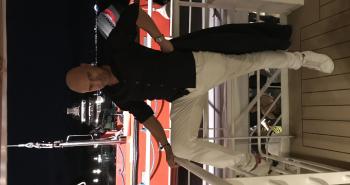Vienna / How did the Vienna Ringstrasse come about?
The center of Vienna is one of the most impressive historical city centers in Europe. The old town is a tangle of magnificent shopping streets dotted with many amazing spectacular historical monuments. Kärntner Strasse, Graben or Kohlmarkt are lined with buildings mainly from the turn of the 19th and 20th centuries, which still breathe an imperial atmosphere.
The center of Vienna is surrounded by the main ring road called Ringstrasse - one of the most beautiful boulevards in the world, home to many of Vienna's most famous sights. The Ringstrasse is 5.3 km long - long enough to become home to monumental buildings such as the Museum of Natural History, the Museum of Art History, the Vienna State Opera, the Parliament or many magnificent noble houses.
It was in 1857 when Emperor Francis I uttered the famous and immortal sentence "It is my will!” The emperor's historical statement appeared in the same year in the Wiener Zeitung.
The original intention of Emperor Francis I was to build a monumental boulevard for spectacular military parades and which would become a symbol of imperial power. The construction of Vienna's Ringstrasse, which was built on the site of the former demolished city walls, took more than 30 years and was a masterpiece of urban planning. Vienna's Ringstrasse is still one of the most beautiful boulevards in the world!
In 1858, an architectural-urban planning competition was announced which included more than 50 projects. The most famous architects involved in the construction and responsible for the appearance of the Ringstrasse were Theophil von Hansen, Heinrich von Ferstel, Gottfried Semper and Carl von Hasenauer. Their buildings were built in a historic style, using elements of older Gothic, Baroque and Renaissance architectural styles.
Challenging construction that required hard work and a lot of effort. Czech and Moravian settlers took part in the production of bricks and building materials in difficult conditions in the city's brick factories The Ringstrasse was officially inaugurated on May 1, 1865. At that time, only part of it was completed. However, as the center of Imperial and aristocratic society, Ringstrasse was not only the site of representative Imperial buildings, but also of numerous villas of the upper bourgeoisie, or gradually the Jewish bourgeoisie, which eventually acquired the full right to build their own villas.
The most beautiful and important buildings include: Vienna State Opera, Parliament, City Hall, Court Theater, University, Museum of Art and History, Museum of the Vienna Stock Exchange, Votive Church, cafes and a park as a space for rest and relaxation. Vienna's Ringstrasse is today Vienna's most important thoroughfare with only one tram running along the boulevard.
Do you want to explore Vienna's Ringstrasse with its wonderful sights? Find a local guide from Vienna right HERE.
















